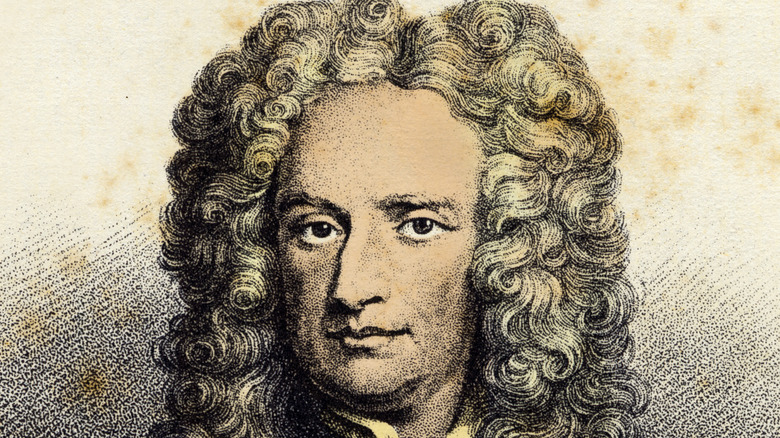The Science Behind The Egg Drop Experiment Explained
Generations of middle and high school science teachers have turned to the egg drop experiment for a hands-on way to introduce students to several core principles of physics. But how does the egg drop experiment work, and once successful, which fundamental laws of physics are illustrated in the process? If it's been awhile since you tried the experiment, or if you're a young person designing a protective egg enclosure of their own, here's the science behind the egg drop experiment.
The objective of the egg drop experiment is for students to devise a way to house an actual egg which is then dropped from a considerable height in such a way that the egg won't crack once it hits the ground, as Sciencing explains. To fully understand how the egg drop experiment is successfully executed, the first step is to brush up on the discoveries of one of the most famous scientists in history, and a set of laws he developed that offer the most accurate reflection of how nature works, from the cracking of an egg to the reasons why planets orbit as they do (via Britannica).
Newton's Laws of Motion
What is primarily illustrated through the egg drop experiment are Sir Isaac Newton's Laws of Motion, first published in Newtown's foundational text "Philosophiae Naturalis Principia Mathematica," in 1687, according to Britannica. In it, Newton explains not just how to drop an egg from a considerable height without cracking the shell — it's unlikely that Newton, himself, every tried it — but also provides fundamental proof that the planets rotate around the sun instead of the other way around, which was quite a scandalous opinion when Newton was alive.
According to the Virginia Tech Department of Physics website, the egg drop experiment effectively demonstrates what happens to an object in the midst of a collision, in this case between the earth and the egg. What's notable about the experiment is that several forces affect what happens when the egg meets the ground. Here's where Newton's Laws of Motion come into play. According to Britannica, these are the law of inertia, F = ma (a means of describing what happens when a body in motion is acted upon by an external force), and finally, the law of action and reaction. The egg drop experiment is successfully executed when a student devises a way to keep these three laws in balance. Typically, this is done by slowing the rate at which the egg falls, while also cushioning the fall, and then constructing a means by which the power of the impact can be absorbed by something else.

